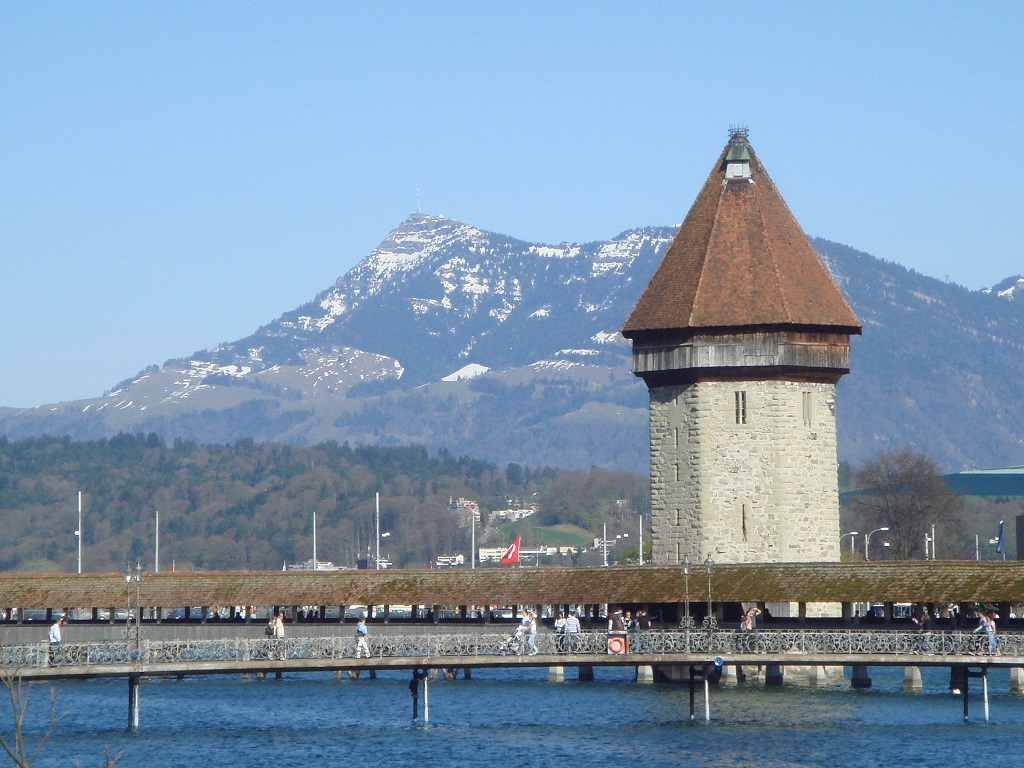Money
The Franc
The currency of Switzerland is
the Swiss Franc. The Swiss Franc which is divided into into
100 centimes (French), Rappen (German) or centesimi (Italian.)
CHF is the internationally used symbol.
Notes are available in denominations of 1,000CHF, 200CHF,
100CHF, 50CHF, 20CHF and 10CHF. Coins are issued to values
of 5CHF, 2CHF, 1CHF and 50 rappen, 20 rappen, 10 rappen and
5 rappen.
The Euro
As Switzerland is not part
of the European Union, the Euro (EUR) is not an official currency.
It is widely accepted in the major urban areas. Where the Euro
is accepted, you will usually only be able to pay with notes
and your change will be in Swiss Francs. You should make sure
you have Francs as not every establishment accepts Euros.
Currency exchange facilities are widely available at banks
and many train stations.
Credit cards
Major credit cards are widely accepted but you should have
cash with you just in case and to cover incidental expenses.
The Cantons
Switzerland has 23 full Cantons, of which three are sub-divided into half-cantons
giving a total of 26 Cantons. The Coats of Arms of the 23 full
Cantons are depicted in The Glass Dome in the Federal Palace
in Berne.
Switzerland was founded
in 1291 when the three forest cantons of Schwyz, Uri and Unterwalden
signed The Federal Charter - a defensive alliance. In later
years, other localities would join the Confederation. The last
expansion of Swiss territory was in 1815 although the last
Canton was created in 1978, seperated Canton Jura from Canton
Berne.
The 26 Cantons, their capitals and years of joing are:
| Canton |
Year of Joining |
Capital |
| Aargau |
1803 |
Aarau |
| Appenzell Innerhoden |
1513 |
Herisau |
| Appenzell Ausserhoden |
1513 |
Appenzell |
| Basel-Stadt |
1501 |
Basel |
| Basel-Landschaft |
1501 |
Liestal |
| Berne |
1353 |
Berne |
| Fribourg |
1481 |
Fribourg |
| Geneva |
1815 |
Geneva
|
| Glarus |
1352 |
Glarus |
| Graubünden |
1803 |
Chur |
| Jura |
1978 |
Delemont |
| Lucerne |
1332 |
Lucerne
|
| Nidwalden |
1291 |
Stans |
| Neuchâtel |
1815 |
Neuchâtel
|
| Obwalden |
1291 |
Sarnen |
| Schwyz |
1291 |
Schwyz |
| St Gallen |
1803 |
St Gallen
|
| Schaffhausen |
1501 |
Schaffhausen
|
| Solothurn |
1481 |
Schaffhausen
|
| Thurgau |
1803 |
Frauenfeld |
| Ticino |
1803 |
Bellinzona |
| Uri |
1291 |
Altdorf |
| Vaud |
1803 |
Lausanne
|
| Valais |
1815 |
Sion |
| Zug |
1352 |
Zug |
| Zürich |
1351 |
Zürich
|
 Baroque interior of the Jesuit Church in Lucerne
Baroque interior of the Jesuit Church in Lucerne
 What not to miss in Lucerne
What not to miss in Lucerne
 Water tower and bridges across the River Ruess in the Luzerner Old Town
Water tower and bridges across the River Ruess in the Luzerner Old Town
 View of Kappelbrüke in Lucerne with the Hofkirche in the background
View of Kappelbrüke in Lucerne with the Hofkirche in the background
 Costumed knight conducting a troupe at the Luzerner Fasnacht
Costumed knight conducting a troupe at the Luzerner Fasnacht
 Fasnachtler masks on wicker baskest in Lucerne old town
Fasnachtler masks on wicker baskest in Lucerne old town
 Sunshine masks for the Luzerner Fasnacht in 2010
Sunshine masks for the Luzerner Fasnacht in 2010
 Bandleader leading his troupe through the central Altstad of Lucerne
Bandleader leading his troupe through the central Altstad of Lucerne